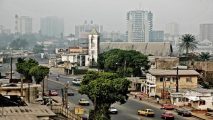Categories
Recent Posts
Archives
- April 2024
- March 2024
- February 2024
- January 2024
- December 2023
- November 2023
- October 2023
- September 2023
- August 2023
- July 2023
- June 2023
- May 2023
- April 2023
- March 2023
- February 2023
- January 2023
- December 2022
- November 2022
- October 2022
- September 2022
- August 2022
- July 2022
- June 2022
- May 2022
- April 2022
- March 2022
- February 2022
- January 2022
- December 2021
- November 2021
- October 2021
- September 2021
- August 2021
- July 2021
- June 2021
- May 2021
- April 2021
- March 2021
- February 2021
- January 2021
- December 2020
- November 2020
- October 2020
- September 2020
- August 2020
- July 2020
- June 2020
- May 2020
- April 2020
- March 2020
- February 2020
- January 2020
- December 2019
- November 2019
- October 2019
- September 2019
- August 2019
- July 2019
- June 2019
- May 2019
- April 2019
- March 2019
- February 2019
- January 2019
- December 2018
- November 2018
- October 2018
- September 2018
- August 2018
- July 2018
- June 2018
- May 2018
- April 2018
- March 2018
- February 2018
- January 2018
- December 2017
- November 2017
- October 2017
- September 2017
- August 2017
- July 2017
- June 2017
- May 2017
- April 2017
- March 2017
- February 2017
- January 2017
- December 2016
- November 2016
- October 2016
- September 2016
- August 2016
- July 2016
- June 2016
Featured
Most Commented Posts
 4 Anglophone detainees killed in Yaounde
4 Anglophone detainees killed in Yaounde
19 comments Chantal Biya says she will return to Cameroon if General Ivo Yenwo, Martin Belinga Eboutou and Ferdinand Ngoh Ngoh are sacked
Chantal Biya says she will return to Cameroon if General Ivo Yenwo, Martin Belinga Eboutou and Ferdinand Ngoh Ngoh are sacked
13 comments Anglophone Nationalism: Barrister Eyambe says “hidden plans are at work”
Anglophone Nationalism: Barrister Eyambe says “hidden plans are at work”
12 comments The Anglophone Problem – When Facts don’t Lie
The Anglophone Problem – When Facts don’t Lie
12 comments Largest wave of arrest by BIR in Bamenda
Largest wave of arrest by BIR in Bamenda
10 comments
Latest Tweets
Featured
-

Kenya: Helicopter crash kills defense chief and nine senior officers
-

4th Cameroon Investment Forum opens in Douala
-

Cameroon doctors flee to Europe, North America for lucrative jobs
-

Dortmund sink Atletico to reach Champions League semi-finals
-

US: Trump media group plans TV streaming platform
-

Cameroon is broken: Who can fix it?
-

Cameroonian beer and soft drinks exports soar by 73% and 46.6% in 2022
© Cameroon Concord News 2024





30, August 2019
Impoverished Cameroon women forced into human trafficking rings 0
With an estimated 30 percent of the country’s population of 24.68 million living below the poverty line, many young Cameroonians are looking to other countries to secure a better life for themselves. And young women are joining this trend with reports of some trapped in human trafficking rings operating in the Middle East.
“Migration appears to be the most popular resolution to individuals growing up in impoverished regions of Cameroon. In response to the increasing poverty, many people move out of the country to seek better living conditions,” said the Borgen Project, an organisation that fights global poverty.
The CIA World Report for 2019 reported that the West African country’s economy suffers from factors that often impact underdeveloped countries, such as stagnant per capita income, a relatively inequitable distribution of income, a top-heavy civil service, endemic corruption, continuing inefficiencies of a large parastatal system in key sectors, and a generally unfavourable climate for business enterprise.
And despite support from the UN World Food Programme (WFP), Cameroonians continue to battle other poverty-related issues including malnutrition, food insecurity and inadequate health care.
While the government tries to fill in gaps by providing subsidies for electricity, food, and fuel, these have dented the federal budget which, in turn, has affected potential funding for education, healthcare and infrastructure, the Borgen Project reported.
In a bid to escape the grinding poverty, Enact Africa recently reported that lured by the promise of employment, some Cameroonian women are being trafficked to Kuwait and Saudi Arabia.
“In September 2018, the kidnapping of 14 young Cameroonian women in Kuwait City brought to light the trafficking of migrant workers in the Middle East,” wrote coordinator Agnes Ebo’o and researcher René Oyono, from ENACT’s Regional Organised Crime Observatory for Central Africa, which is part of the Institute for Security Studies (ISS).
Following diplomatic negotiations between Kuwait and Cameroon, the young women were eventually able to return home. However, Enact confirmed that the 2016 incident was neither unique nor unprecedented.
“In 2016 Cameroon’s government was already referring to a five-year old practice, implying that the phenomenon has existed since at least 2011.”
As the trend continues, Cameroon’s unemployed women, often with limited educational qualifications, are still being smuggled to the Mideast by intermediaries whereupon arrival they end up trafficked or enslaved.
Their destinations predominantly include Kuwait, the United Arab Emirates (UAE) and Saudi Arabia, according to Oumia Paba Salé, Near and Middle East Foreign Affairs Secretary at Cameroon’s Ministry of External Relations (MINREX).
Walk Free Foundation’s Global Slavery Index in 2017 ranked Saudi Arabia and Kuwait among the countries with the highest prevalence of slavery in the Arab world.
In most cases, the women are recruited through networks in Cameroon that advertise jobs for candidates through posters at universities and churches in the capital Yaoundé and another major city Douala.
The victims are then entrapped in a vicious cycle which begins when they are forced to pay between $2 000 and $3 000 to various players in the human trafficking chain, leaving them in debt upon arrival at their destinations where they are held in servitude – often with their passports taken away from them – until they are able to repay their debts, sometimes through sex work and at other times through low-paying menial labour – and they are not always freed once their debts are paid off.
“This practice has serious implications at individual, family, community and state levels. It causes financial losses that are devastating for poor families; and their inhumane treatment leaves victims highly traumatised,” said the Enact report.
African News Agency (ANA)